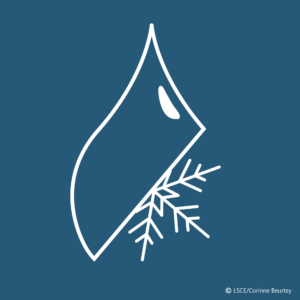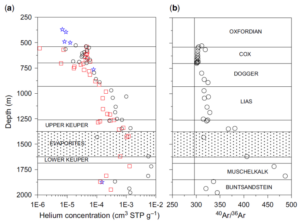As part of its ongoing project on repositories for high-activity, long-lived radioactive waste, a 2000 m deep borehole was drilled by the French Nuclear Waste Agency (ANDRA) in the layered structure of alternating aquifers and aquitards of the Eastern Paris Basin. Among the information retrieved from this borehole, the vertical distribution of chloride in porewaters showed that, in addition to vertical diffusion, lateral advection in the aquifers plays a major part in transporting chlorine away from the study area. Helium concentrations were also measured in porewaters along the borehole. Because the helium input function is different from that of chlorine, it represents an excellent alternative tracer to further constrain transport characteristics. We applied an advection–diffusion model to the helium profiles with the appropriate source term for 4He based on U–Th measured concentrations of uranium and thorium. 40Ar/36Ar data, which were available along the whole sequence, were also simulated. The modelled and measured 4He profiles were in good agreement, indicating that the transport parameters used for the chlorine simulations were robust. 40Ar/36Ar simulations also gave coherent results and confirmed that most of the radiogenic 40Ar remained trapped in the rocks (primarily in clays and feldspars).
Authors : P. Jean-Baptiste, B. Lavielle, E. Fourré, T. Smith, M. Pagel
Ref : Geological Society Special Publications 443.



